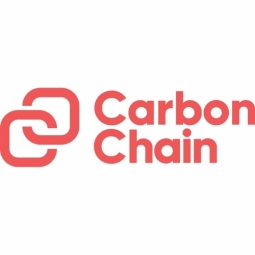CarbonChain

概述
|
总部
英国
|
成立年份
2019
|
公司类型
私营公司
|
收入
$10-100m
|
|
员工人数
11 - 50
|
网站
|
推特句柄
|
公司介绍
CarbonChain 是 CDP 认证的解决方案提供商、TCFD 支持者和 ResponsibleSteel 成员。其碳核算方法由必维国际检验集团 (Bureau Veritas) 独立验证,并由 SGS 验证。
CarbonChain 的平台使企业能够追踪、报告和减少其供应链排放,涵盖碳密集度最高的行业(金属和采矿、农业和制造业)。
物联网应用简介
技术栈
CarbonChain的技术栈描绘了CarbonChain在分析与建模, 网络安全和隐私, 平台即服务 (paas), 传感器, 和 应用基础设施与中间件等物联网技术方面的实践。
-
设备层
-
边缘层
-
云层
-
应用层
-
配套技术
技术能力:
无
弱
中等
强

Supplier missing?
Start adding your own!
Register with your work email and create a new supplier profile for your business.
实例探究.
Case Study
Mocoh's Transition to Lower Carbon Emissions with CarbonChain
Mocoh, a Geneva-based company supplying essential energy and resources across Africa, was facing a significant challenge in managing its greenhouse gas (GHG) emissions. In 2021, the company had little to no visibility of the carbon footprint or intensity of its oil and oil product trades. Mocoh wanted to lead the way in identifying sources of carbon emissions across its supply chain and publishing its findings. The company recognized the importance of transparent information and collaboration with all stakeholders in the complex energy transition. However, to do this, Mocoh needed to start measuring emissions from across its supply chain. The goals were to inform regulators with data-led information, understand the scale and structure of emissions in its products and transaction logistics, identify opportunities to reduce carbon intensity, and proactively and transparently share data with stakeholders.
Case Study
Concord's Journey to Industry-Leading Carbon Insight for Trade Portfolio
In 2019, Concord, a leading global independent metals and minerals trader, aimed to pioneer Scope 3 carbon footprinting in the commodities sector. However, the company faced the daunting task of analyzing over 10,000 trades, identifying key upstream assets, and bridging the notorious data gap for extractive emissions. Concord's supply chain emissions were the most significant, especially in the carbon-intensive commodities industry. The company wanted to take a market-leading approach, defining best practice in carbon accounting for commodity trading. Concord needed to quantify its total Scope 3 CO2 output, benchmark its performance, break down the emissions sources, and compare trades, suppliers, and assets. The company required accurate, verifiable, and comprehensive emissions calculations that all stakeholders could trust, covering all of its approximately 10,000 annual trades and the end-to-end supply chain for each one. The in-house execution of this task seemed impossible due to the volume of manual data collection and analysis required and the shortage of reliable emissions data for the extraction, production, and transport of commodities.
Case Study
Driving Carbon Reductions in Trade Finance: A Case Study on Societe Generale and Concord
Societe Generale, a leading European financial services group, was facing a challenge in understanding the carbon footprint of its commodity trade finance portfolio. The company needed granular, actionable data to analyze its trade loan portfolio’s emissions and comprehend the carbon footprint of complex individual supply chains it finances globally. The commodities financed, such as oil, gas, metals, and agricultural materials, are some of the most carbon-intensive products. Therefore, understanding the embedded emissions in these financed trades was a critical first step towards reducing them in line with Societe Generale’s sustainability goals. However, obtaining accurate, asset-level emissions data for extractive and agricultural commodity supply chains was complex. The company sought to support its clients, like Concord Resources Limited, in their journey towards carbon neutrality, but lacked the necessary data to do so effectively.
Case Study
CarbonChain's Solution for Gunvor's Carbon Disclosure Challenge
Gunvor Group, one of the world's largest independent commodities trading houses, faced a significant challenge when a key customer requested greenhouse gas (GHG) emissions data for all their naphtha trades. This data was to cover the entire supply chain, from the extraction of crude oil and condensate to the delivery of naphtha at the customer gate. However, Gunvor had limited information about their supply chain emissions. They had some calculations for their own vessels, but lacked data for upstream oil and gas activities or for the processing of oil into naphtha, except for their own refineries. To meet the customer's request, Gunvor would have needed to gather raw data from various sources and access time-sensitive, asset-level GHG emissions information, which was difficult, expensive, or impossible to obtain. The data analysis, calculation, and reporting process was set to be a huge challenge, as well as a cost and time burden.
Case Study
Fusina's Initiative to Provide Carbon Footprint Data for Aluminum Products
Niche Fusina Rolled Products (Fusina), an Italy-based aluminum rolling mill, faced the challenge of providing its customers with detailed carbon footprint information for its tailor-made coils, metal sheets, and plates. The company aimed to enable prospective buyers to make informed purchasing decisions based on the average product carbon footprint. Additionally, Fusina wanted to provide customers with a carbon footprint report attached to their invoices, which could be used in their own Scope 3 reporting and product lifecycle calculations. The challenge was to roll out this scheme immediately, starting with marine and road transportation products delivered into Germany, Italy, Benelux, and Scandinavian markets, with the expectation to expand it across all Fusina’s products and countries by early 2023.
Case Study
Rabobank's Journey Towards Transparent, Low-Carbon Supply Chains
Rabobank, a cooperative bank with a significant international banking operation, is committed to addressing its financed emissions and carbon risks. Since 2020, the bank has been working with clients to address high-emitting supply chains in its commodity trade finance portfolio. For instance, Rabobank implemented a pilot scheme offering metal commodity traders incentives for meeting sustainability targets and a template for clients to develop a climate action plan to decarbonize their trade flows. However, Rabobank faced a significant challenge: the lack of high-quality emissions data for clients’ supply chains. The bank recognized that to strengthen its green finance schemes and set quantified targets with measurable progress, it needed to overcome this barrier. Rabobank aimed to achieve three key goals: setting emissions reduction targets, advising clients on carbon risk reduction, and reducing the carbon footprint of its trade commodity finance portfolio.



